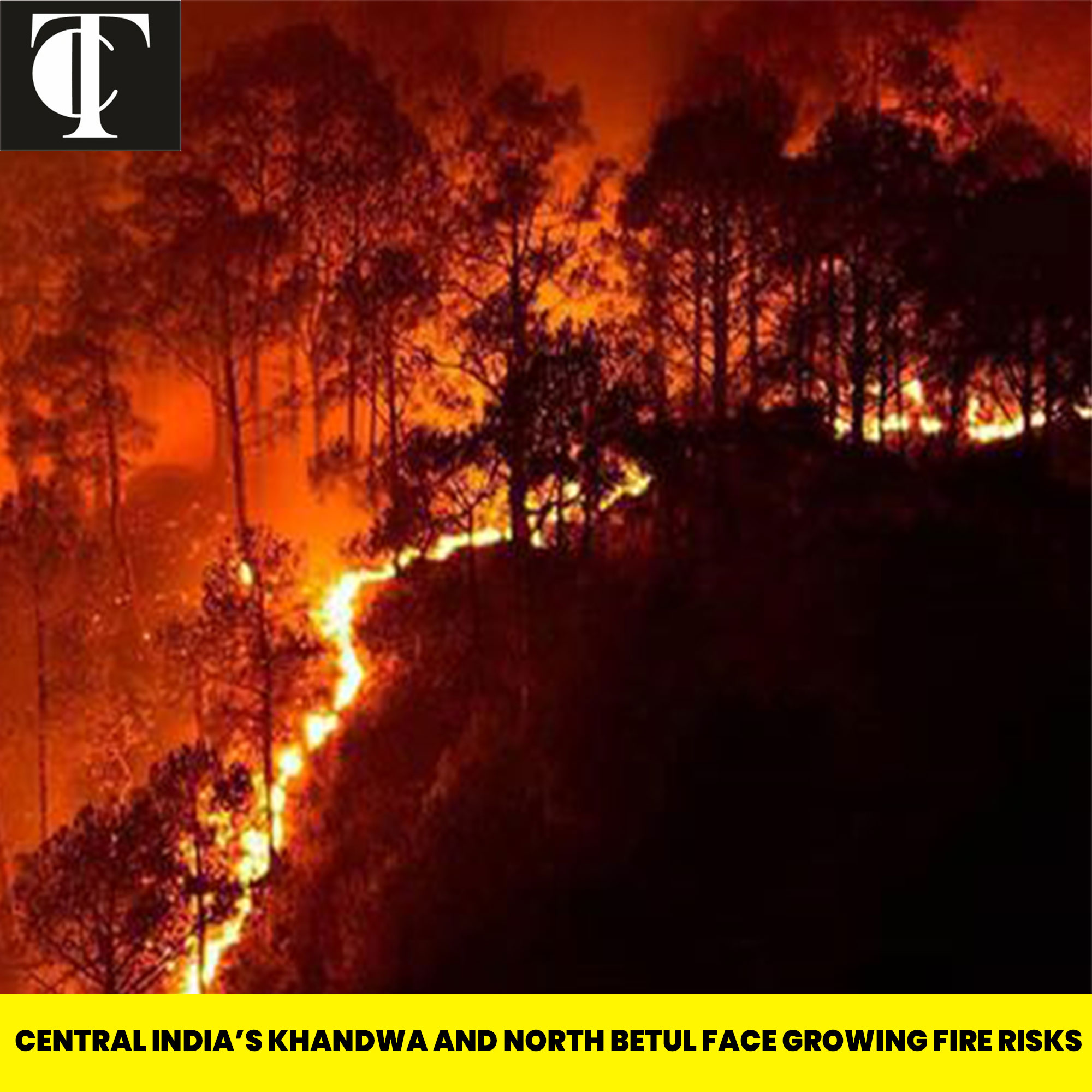


According to a new research released on August 14, 2024, the chance of forest fires in the forests of Khandwa and North Betul, both in Central India, is rising. A mix of natural and human causes are driving this alarming trend, which raises serious issues for conservation efforts.
22 years of satellite data from the MODIS (Moderate Resolution Imaging Spectroradiometer) were examined in the study, which was conducted by Vibha Sahu from the Indian Institute of Forest Management. A worrying pattern was found by the research: North Betul has seen an extra fire year, while Khandwa’s forests have witnessed an average rise of three fires yearly.
Now, almost 50% of North Betul’s woods and 45% of Khandwa’s forests are classified as having a high or extremely high fire risk. The most dangerous areas of Khandwa are the north and southeast, while the northwest and northeastern sections of North Betul are most vulnerable.
The study reveals a number of factors, such as plant type, land topography, and human activity, that raise the danger of fire. Because of their tendency to catch fire, Khandwa’s teak trees are especially prone to them, especially when they’re close to roadways. The need for community education on safer resource management strategies is highlighted by local activities that unwittingly enhance the risk of fire, such as burning undergrowth to gather mahua flowers and tendu leaves.
To predict the locations of future fires, the study team used the Analytic Hierarchy Process (AHP). By categorizing various locations into five degrees of fire risk, this predictive modeling makes it easier to concentrate fire management and prevention efforts on the most vulnerable places.
The results of the study are essential for developing conservation plans in Central India. Authorities may more efficiently allocate resources and carry out fire control plans by identifying the areas that are most likely to experience fires, protecting the woods and the populations that rely on them. Lead researcher Vibha Sahu stresses that focused action is desperately needed to reduce the rising hazard of forest fires in these areas.
The Madhya Pradesh town of Khandwa has a rich cultural and historical past. Famous locations include the Ujjain and Omkareshwar temples, and it boasts a rich history that dates back to the 1857 Sepoy Mutiny. A significant agricultural center, Khandwa is well-connected by the Indian Railways and is well-known for producing pulses and cotton. The surrounding holy Narmada River enhances the cultural significance of the area.
North Betul, which is a portion of Madhya Pradesh’s Betul district, is well-known for its beautiful scenery, which includes the Satpura Range, and a wealth of wildlife. In addition to being a major producer of soybeans, the region holds an annual Jain festival honoring the local way of life. In addition to being home to the historically significant Bhimbetka rock shelters, North Betul’s tropical environment is important for daily living and agriculture.
To save these essential ecosystems and the populations who depend on them, quick and focused action is required as the risk of forest fires in Khandwa and North Betul is rising. To address this expanding environmental concern, the report recommends improved fire management techniques, public awareness campaigns, and sustainable land-use practices.
READ ALSO : Mukhyamantri Ladki Bahin: Maharashtra’s ₹1,500 Boost for Women